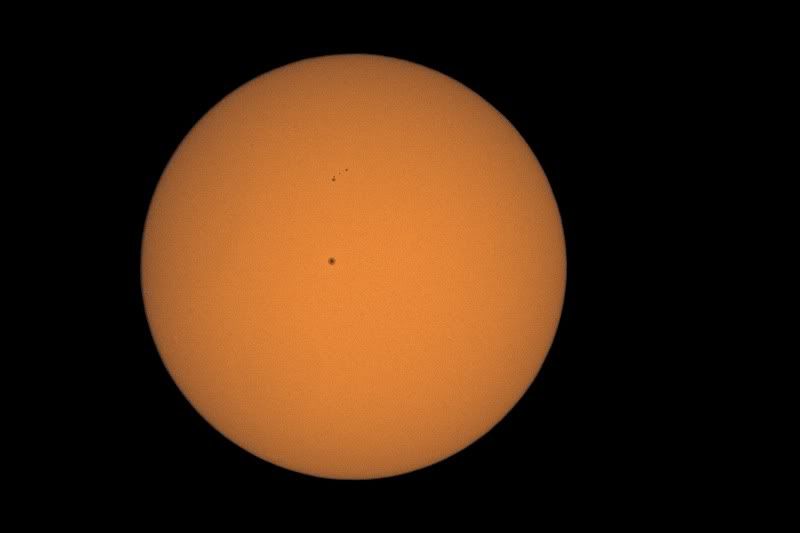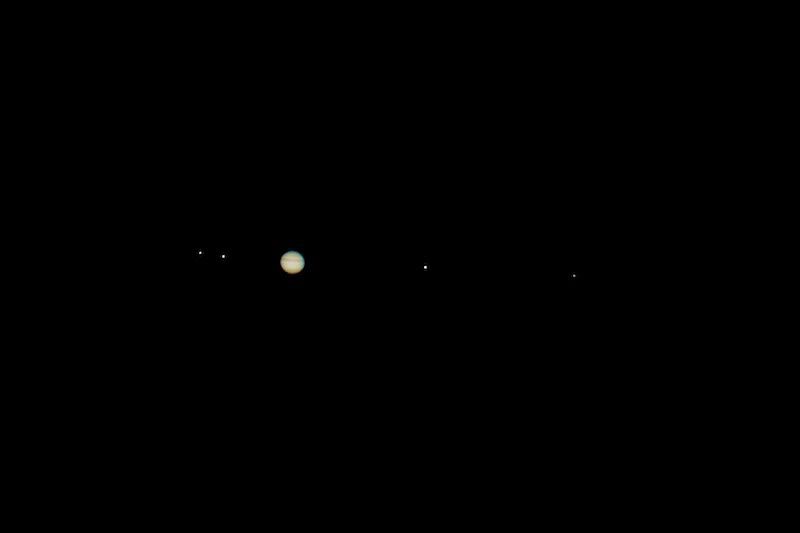Ok, lets start with the Sun... it's been a bit noticeable by it's absence behind thick layers of clouds recently, but there have been a few peeks... Oldest first...
The first two were shot with the NexStar 60


Then these two were with the same filter cell on the C80ED


Another with the NexStar

And finally with the C80ED but with a proper filter cell, designed to fit, not home brew, and no ripples in the filter itself (makes quite a difference)

And onto the Moon
A few quick single frames, all with the C80ED and 2x TC



And finally the Harvest moon

I had a go at some closeup work, whilst setting up for a bash at Jupiter the other night, QHY5v with a 5x barlow on the C80ED. Each is about 500 of 1800 frames.
Schiller to bailey

Sinus Iridium to Pythagorus

Grimaldi to Cavalerius

And finally, after months of waiting, clouds covering the moon at the best point in the cycle, I finally got Aristarchus

And onto Jupiter
I had a bash at my first RGB image, I don't have the equipment to do this properly, and I don't have imaging filters, just cheapy wratten filters. This was using a 2x barlow and some tubes on the C80ED with the QHY5v. I'm rather pleased with how it came out. I do need to adjust the size of the blue filter, as it's about 0.5mm to large to fit in the filter holder. This is 300 of 1000 frames in each colour

I had a bash (whilst getting the single frame moon shots) at Jupiter with the SLR, not ideal equipment, but when I cropped in, I was amazed to find, that not only had I got the Galilean moons, but also some surface details

I also had a try at getting both Jupiter and Uranus in the same field of view. Much harder than it sounds... still.. C80ED, 2xTC with the 450d. It took some work to fit them both in, and I ended up having to take two exposures, one for Jupiter and one to include Uranus, I was aiming to try and get some detail on Jupiter (although it's really rather hard to see at this size. Jupiter is obvious, Uranus is the star in the upper left.

And finally, I had a bash at Jupiter with the 5x barlow. I opted to try some LRGB imaging this time, but rather than use filters, used two cameras, one mono for the L and one colour for the RGB. It worked nicely too...
C80ED, Antares 5x Barlow
L - QHY5v

RGB - SPC900

LRGB - Combined

And the normal orientation

I'm really pleased with that last combined Jupiter image, I even got the GRS (a first for me).
Friday, 24 September 2010
Some Sun, Moon and Jupiter
Subscribe to:
Post Comments (Atom)







No comments:
Post a Comment